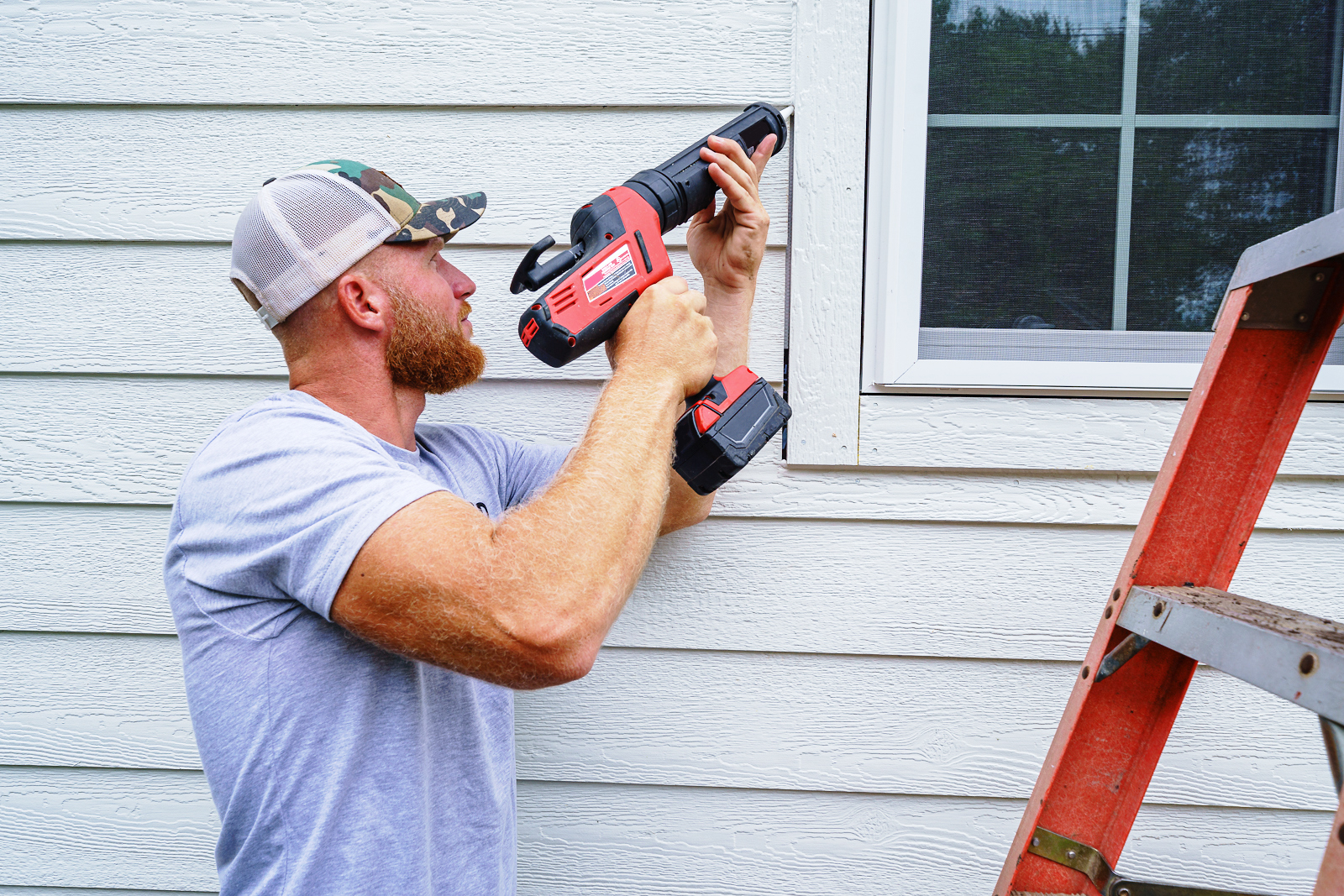Industry Trends6 min
What Do We Mean When We Say LP SmartSide Acclimates to its Environment?
Proving the Validity of Leaving a 3/16-inch Gap at Vertical Joints When Installing LP® SmartSide® Lap Siding
We hear it time and time again from first-time LP® SmartSide® Trim & Siding users: “Why do installation instructions on how to install lap siding call for a 3/16-inch gap between vertical joints?” We're here to explain that instructions for installing specify this gap for good reason—to allow the siding to expand during the acclimation process.
As LP SmartSide Lap Siding acclimates, the size of the gap between the two pieces of siding will begin to close in. We spoke with a construction service associate at LP Building Solutions and Kyle Stumpenhorst of @rrbuildings to explain what it means for engineered wood to acclimate and to answer the question on every builder's mind: “Does LP SmartSide siding truly acclimate to close the gap?”
What is the Science Behind LP SmartSide Lap Siding Acclimating?
Moisture content is a combination of relative humidity and air temperature. During the manufacturing process of LP SmartSide products, the engineered wood is dried and its moisture content is around five percent. "LP SmartSide siding must acclimate-or balance out-to the moisture content in its environment, resulting in the linear expansion of the siding" says Isaac Ojeda, Construction Service Associate at LP.
He goes on, "The process of siding reaching a moisture level balance with the local environmental conditions causes the lap siding to increase in length. Providing a 3/16-inch gap at all vertical joints when installing lap siding ensures the necessary room for any possible linear expansion after initial installation."
Stumpenhorst validates the reasoning behind the gap, saying, “I can attest firsthand that there needs to be a 3/16-inch gap between two laps. Through past experience, I've seen those gaps close up in a matter of months. Because the siding is coming from the mill, as soon as the siding acclimates with the new climate absorption of moisture is naturally going to cause the siding to expand and close the gap.”
How Much Does LP SmartSide Lap Siding Acclimate and Expand the Siding?
Ojeda says, "Over the length of the 16-foot lap board, the siding will expand approximately 1/8-inch. We can say it will expand 1/16-inch in each direction and another 1/16 as a buffer, which can close the recommended 3/16-inch gap." Whether installing lap siding that is 16-foot or 6-foot in length, LP's recommendation is to provide a standard gap for the ease of installation.
When it comes to engineered wood siding installation, Ojeda also stresses the importance of proper flashing when explaining the difference between acclimation as well as expansion and contraction. "We refer to acclimation as a one-time process. Remember acclimation is balancing out to its environment. Expansion and contraction are affected by moisture. If it's not flashed properly, moisture buildup could cause the siding to expand more than it naturally would."
How Long Does It Take LP SmartSide Products to Acclimate?

Ojeda says, "It's not a one-size-fits-all answer. Weather in general affects acclimation. Even landscaping that blocks direct sunlight can play into the timeline."
Stumpenhorst, who recently re-sided a home in Dixon, Illinois during the summer months, says, "With the intense humidity of the environment, I noticed the gap starting to close within a week's time. It surprised me how quickly the acclimation process began and provided instant proof for this requirement when installing lap siding."
What Happens if I Don't Gap the Product?
If the 3/16-inch gap isn't installed, the product can buckle. "I had one installer in Texas tell me they didn't follow directions and leave a gap. By the time they finished the house, the siding on the first wall had closed up and started to buckle," says Ojeda. "We get more feedback from customers on siding buckling versus the gap," continues Ojeda. Moral of the story-this is one of those siding installation mistakes you cannot make.
Should I Caulk Over the Gap?
"I know it seems crazy, but these gaps will close up," explains Stumpenhorst. "If you don't like the gaps, you can resort to caulking siding gaps or use an H-clip to cover up the gap. For me personally, after experiencing the product, pan flash is my preference if working with prefinished siding."
Ojeda says there are three butt joint options: sealant, joint molding and pan flashing. He goes on, “Caulking requires annual maintenance on LP SmartSide products, so be sure to refer to the care and maintenance instructions when looking for details on how to caulk siding gaps.”
Convinced LP SmartSide products are right for your next build? Click here for more information.
Continue Reading
Resiliency Solutions
5 minIntroducing LP® SmartSide® ExpertFinish® Naturals Collection™: Nature-Inspired Beauty Meets Engineered Performance
We're excited to introduce the LP® SmartSide® ExpertFinish® Naturals Collection™, a bold new addition to our trusted line of engineered wood siding and trim that delivers the warmth and beauty of nature with the advanced protection and performance builders and homeowners expect.
Labor Solutions
5 minChoosing the Right LP® Structural Solutions Product for Your Build
When it comes to building strong, reliable, and high-performing structures, the materials you choose matter. At LP Building Solutions, we understand that every project, whether it's a single-family home or a multifamily development, requires structural components that meet your needs for strength, durability, and efficiency.
Sustainability Solutions
5 minBuilding a More Sustainable Future with LP Building Solutions
In today's world, sustainability is no longer just a buzzword, it's a blueprint for responsible living and smarter building. As the construction industry seeks ways to reduce its environmental footprint, LP Building Solutions is focused on providing innovative building materials for eco-conscious builders to help reshape what it means to build sustainably
News & Stories3 min
History of Partnership with Gary Sinise Foundation
The LP Foundation is a proud partner of the Gary Sinise Foundation, which supports wounded veterans in several ways. You can learn more about the LP Foundation here.